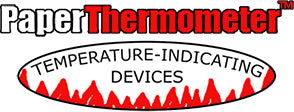Quick Video - How to Sanitize Your Dishes
Learn how to use a temperature label to verify that your dish surfaces are reaching the US FDA Food Code required 160°F temperature. In this video we use the popular TL1-160 Thermolabel temperature indicator to demonstrate how to easily and inexpensively test dish sanitation for Food Code (Section 4-703.11 (B)) and HACCP compliance.Maintaining food safety during food preparation is an important responsibility of the kitchen staff. Part of the job is making sure that dishware is properly sanitized. Today we are going to take a closer look at a video that explains how to verify correct dishwasher sanitation temperature.
The video How to use 1-Temp Thermolabel® 160°F Temperature Labels in a Commercial Dishwasher offers a lot of key info in its less than two minutes run time. After watching you will have a solid understanding of how Thermolabels work and how to verify sanitation temperature with a temperature label. The video focuses on the 1-Temp Thermolabel® 160°F temperature test strip which is our best selling temperature label for use in commercial dish sanitation. Much of the information also applies to our other Thermolabels for Food Service for example our TL1-160W.
The first thing that is covered is how the label shows that the FDA Food Code required 160°F temperature has been reached. The easy to understand white to black temperature indicating color change that is the basis for all Paper Thermometer Thermolabels is demonstrated. Next up we see the steps for using the TL1-160 dish temp label. These are illustrated using a real high temperature sanitizing dishwasher giving the viewer a demonstration of the temperature label in its actual use environment.

Next, run the dish cycle as you normally would. The video points out an interesting tip here. Avoid testing on the first couple of runs of the day. This is because the sanitation dishwasher will not have fully heated up yet and you could get an erratic result. A dishwasher is made from a good amount of metal. This metal will absorb heat from the wash and rinse water. Better to run it a couple of times to allow all of the dishwasher to come up to temperature before doing your test.
After the cycle is complete, wait a minute before opening the doors and removing the dish to observe the results. The suggestion to wait prior to opening the dish washer is to make sure the label has had the time to fully register the temperature and also lets the water from the cycle settle down in the dishwasher.

Allow the dish to cool somewhat and then peel the label off. It can either be discarded or saved for record keeping. The temperature labels are often saved after each test in a log book to comply with HACCP. We have a downloadable and printable record keeping log page which you can find here.
Be sure to check out the full video on YouTube. Like and subscribe would be appreciated.
Also view all of our Thermolabels for Food Service.
If you have any questions about using temperature labels for dish sanitation please contact us.
